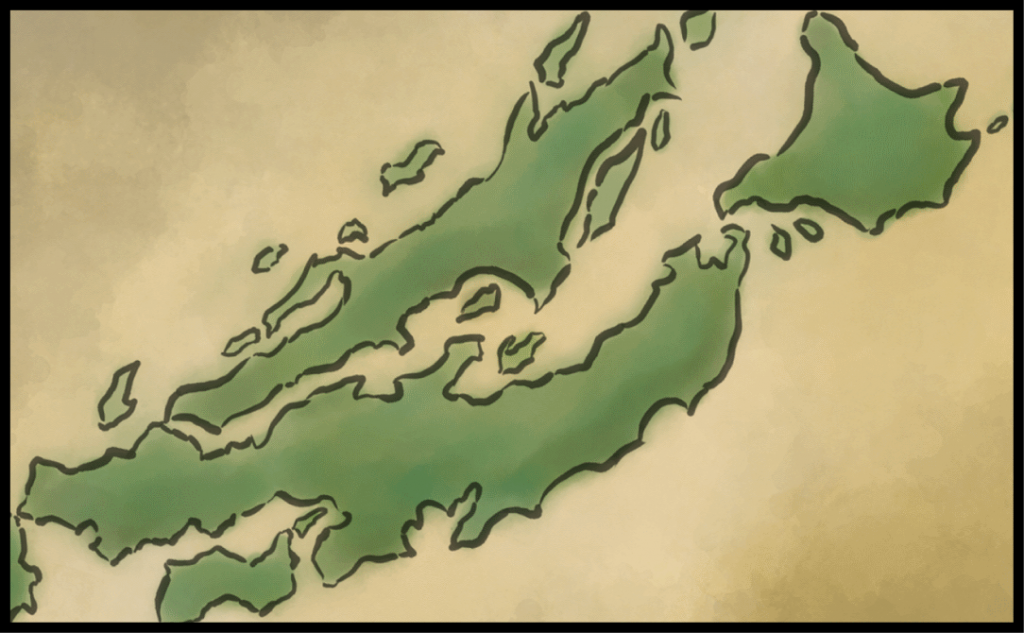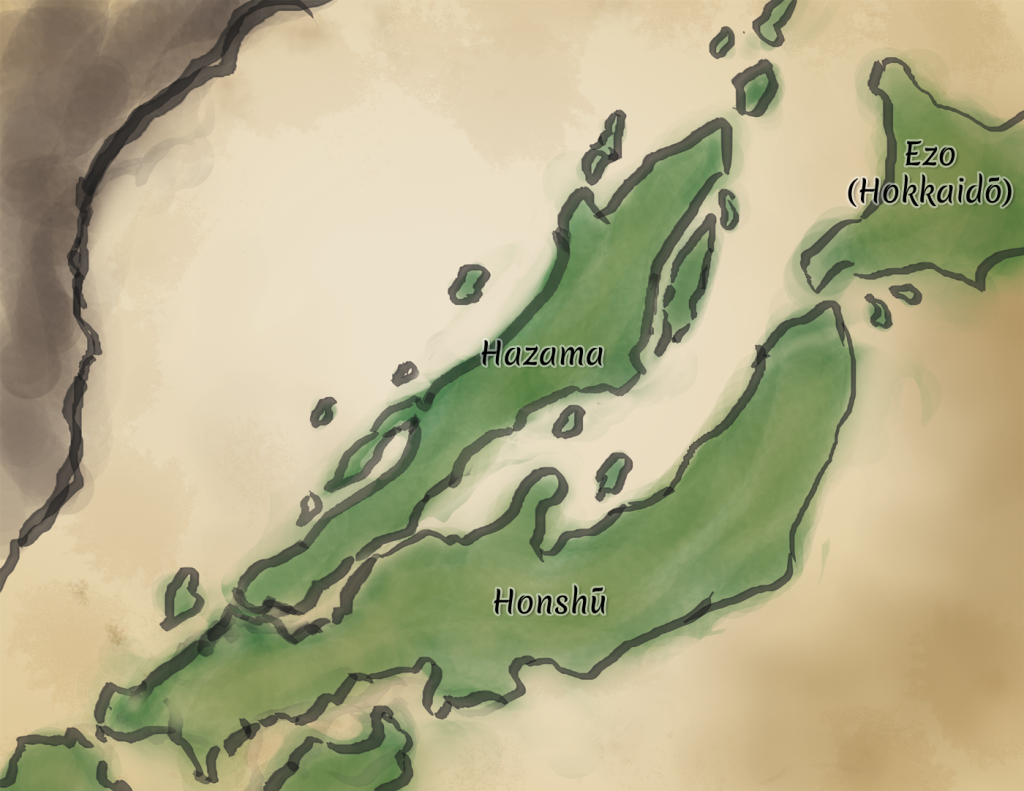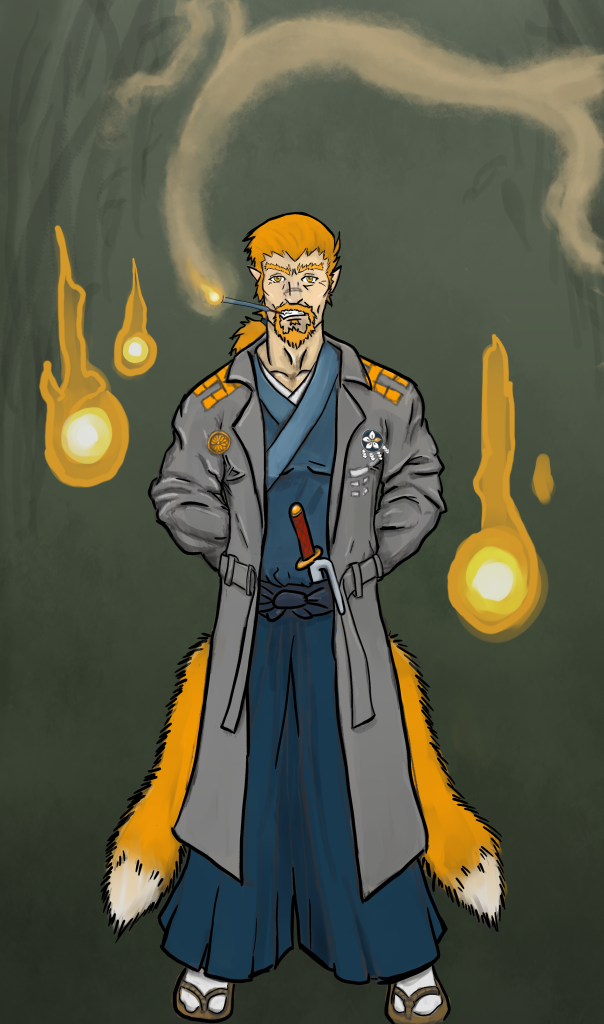
How does one go about building a setting based on the ideas of an entire culture? Culture is fluid. It is defined by, but also defines those who live within it. Does this mean it’s impossible for me to make a game that’s an authentic representation of Japanese culture? I think that’s a very complex topic that would require more than one post to give it due respect. But the gist of the matter centers around how you define the words “authentic” and “representation.” I believe there’s more to being authentic than showing something in as accurate and historical form as possible. For the sake of this post, I am discussing an authentic representation as something that feels natural and recognizable to the holder of a culture, something that the holder themselves might make. It is a representation that makes an attempt to minimize problematic triggers that could perpetuate unhealthy prejudices about that group. I believe pursuing an authentic representation is important for creators contribute to helping the issue of media representation overall. I like to believe that people make culture more than culture makes them, but culture does indeed contribute to who they are. If you are not mindful of what you are representing with your work, you can harm people who are being defined by such works.
No matter how you begin your approach, all representation requires people who are knowledgeable about the source material work is based on, even if the work is unique to you (you are the expert in this case). This is why I believe this article can benefit any writer, and not just one hoping to make authentic experiences from historical or real world cultures. Just like I am attempting to make an recognizable Japanese experience with Mysteries of the Yōkai, someone can just as likely fail or succeed to make an authentic Lovecraftian, Ancient Greek, or Tolkien-esque setting.
The most important part of creating an authentic or accurate representation is understanding that you likely lack all the information and should go and seek it out. We are individuals and we are limited by the perspectives and environment we live in, they filter and color the way we perceive experiences. There is always more to gain by asking others for their perspective and input. This is true of just about any culture or setting. Even if you are building your own universe, parts of it will still reflect things found in the real world or things someone else wrote. This means you need to inform yourself through research, but more importantly it means you should find and listen to people who identify with the culture you are referencing.
This doesn’t mean you don’t have any input in your own design, or that you should sacrifice everything in the name of accuracy (that is probably one of the worst things you can do). All artists have their own vision and want to express something about how they see the world. Your writing, regardless of basing, is defined by you and your own experiences. That being said, when we create for other audiences it’s important to be aware of that audience what what we might say about them, especially if what might be said is unintentional. We write about the things that we enjoy, feel passionate about, and identify with. This is why we care about authenticity—we want others to feel the same way about our work too. When we adopt another history into our own work (real world or not), we want fellow fans to identify with it too.
It can be difficult to avoid misrepresenting a culture, especially if we’re steeped in a version of that culture that has been filtered secondhand by other media When we get things wrong, highlight the wrong traits, or unintentionally focus on the otherness of real people, we run the risk of disappointing our audience at best, and causing psychological distress at worst. I don’t know about you, but that’s definitely something I don’t want to happen. This is especially important when dealing with real-world cultures because you may incidentally make a statement about people’s personal identities and lives that might be harmful to them. Of course you shouldn’t discount misrepresenting fictional culture or history either, doing so can easily raise the ire of fans.
There’s a difficult balance to maintain here, between your vision, and the experience of your players. But that’s the dilemma of all game designers, and it’s a worthy challenge to engage with. This is where thinking like a game designer can really help out.
Creating a good experience hinges on your ability to compromise with player (reader) experiences. A good experience should be a part of your vision, so it’s a simple decision, though usually one much easier said than done.
What happens when a writer unintentionally reinforces a harmful stereotype in their writing and some of their readers protest? The writer can decide that having a stereotyped character is not a part of their vision and change it all, they can decide that it’s important for their character to stay exactly the way it is, or (more commonly) they can keep what elements are important to them and change their story to align itself better with the experience of the readers.
It’s important to create an authentic experience no matter what you base your setting in; doing so makes it feel more alive and real. People born in a culture have a leg up in their ability to talk about their culture. But that doesn’t mean that you can’t create an authentic or respectful representation. In fact, I believe the opposite, with research and knowledgeable people, anyone can inform their works and they should be encouraged to try. Culture is inherently transmitted—it is made to be shared with others.
You don’t need to be born in a culture to appreciate it or talk about it. But if you don’t do right by the subject you talk about, you should expect some healthy criticism. People have investment in what you say about their identity. So long as you respect your audience and make an earnest attempt listen to the people who are a part of the culture you are referencing, you should be fine. The important thing is to be as purposeful with your decisions as you can. Finally, there’s a final caveat you have to keep in mind as a content creator. Even after all the work you’ve put in to be mindful of a culture and people in your work, it is ultimately not up to you whether or not your work can be considered an authentic representation. We must try our best to be authentic regardless, but it is up to those who hold the stake in the identity you are representing that should have the final say. It’s similar to how your audience will be the ones to determine if they like your work in the end, you can make the best thing according to you, but it is they who will end up being the judge. To me that’s a part of the thrill of being a content creator. Though it is a lot of work, I know it is worthwhile work.
I am but one person and I still have a lot to learn as I explore what it takes to be responsible creator. I will be sure to continue to post my findings and musings as I discover them.


